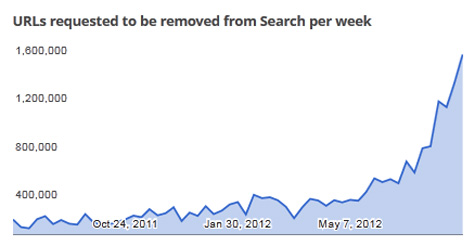Two related bits of Apple TV news –
On July 26, the new version of OS X was announced with a smallish new feature:
When iOS 4.2 debuted, Apple changed the name of AirTunes—the feature that let you stream music from iTunes to an AirPort Express—to AirPlay, and in the process upgraded it considerably. In addition to streaming audio from iTunes on your computer, you could now stream from any AirPlay-enabled iOS app—you could even stream video to Apple TV. In fact, as of iOS 5, you could actually mirror the screen of an iPhone 4S or later, or an iPad 2 or later—whatever that screen displayed, you could view on your TV through your Apple TV. AirPlay mirroring was such a great feature that people wanted it for their Macs. And in Mountain Lion, Apple has delivered: You can now send your Mac’s screen to any second- or third-generation Apple TV on the same local network and mirror it on any connected TV.
So the ability to throw content from your device to your TV used to be limited to iOS devices, and now you can do it on PC-class devices.
It happens that a lot of video on the web comes with more generous licensing terms than when it is accessed via a smartphone or tablet. The ability to throw content from PC to TV makes this somewhat moot.
Hulu is free on PC, but charges a monthly fee on connected TVs. In reducing the barrier between PC and TV, it became harder for Hulu to exert enough pressure on customers to pay the fee.
The second bit of news came today: Hulu became available on Apple TV, with payment made through iTunes.
Hulu Plus subscribers can finally start using the service on Apple’s Web TV peripheral, via a software update Apple pushed out overnight. So if you’re paying the service’s $8-a-month fee, you can now stream TV shows, movies — along with ads — directly to your flat screen.
This bring’s Apple’s hardware to parity with other devices like the Roku devices and Microsoft’s Xbox 360
The important thing is between the lines: Hulu Plus is now tithing part of the subscription fees to Apple.
Like Apple’s deal with Netflix, Hulu Plus is integrated directly into Apple’s iTunes store, which means that if you aren’t a Hulu Plus subscriber, you can sign up using your iTunes account, and Hulu will bill you via Apple. Presumably this means that just like it does with Netflix, Apple will keep a portion of Hulu’s monthly fee.
Paying Apple in perpetuity is a bummer for Hulu. But they had to do it, because PC mirroring put them in a lose-lose situation. Either all usage of Hulu on Apple TV would be unpaid, because it was mirrored from the PC, or it would be paid via the iTunes store and Apple would get a cut:
Hulu and its owner/content partners (Disney, Comcast, and News Corp. , which also owns this Web site) had little choice but to get Hulu Plus onto Apple TV. Because with the new Airplay feature in Apple’s new Mountain Lion update, anyone with an Apple TV can already “mirror” the free Hulu Web service onto their TVs. Not being able to offer the paid service – which offers features like a deeper content library and HD streaming — would have been quite vexing for Jason Kilar and company.
That’s a smart bit of hardball strategy on Apple’s part. I don’t _like_ it, but I admire it.
